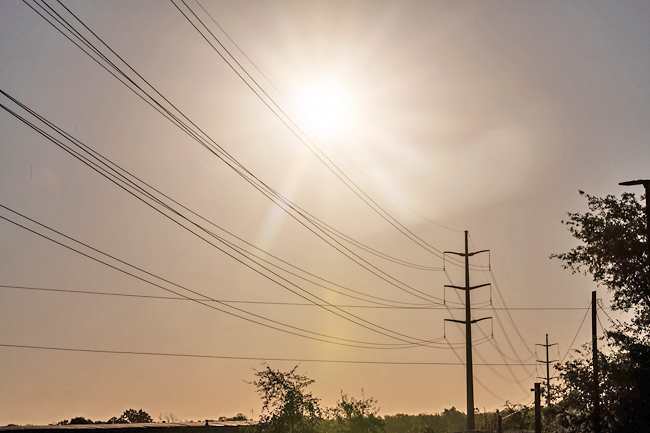THE WASHINGTON POST – Almost half a century ago, scientists began to theorise that a certain class of chemicals – which were found in virtually every air conditioner, aerosol can and refrigerator around the world – had a particularly dangerous side effect.
These compounds, known as chlorofluorocarbons (CFCs), could float up into the stratosphere and break down a protective layer of ozone, allowing more ultraviolet light to enter the atmosphere and harm humans, crops, and entire ecosystems. In fact, this had already happened: There was a hole in the ozone layer over the South Pole.
Experts view the subsequent treaty to cut down on the use of CFCs – the 1987 Montreal Protocol – as a landmark environmental achievement.
Scientists estimate that the pact has prevented millions of cases of skin cancer. Today, the ozone hole is recovering well.
But a provocative scientific paper published on Friday in the journal AGU Advances suggested that the link between the ozone layer and human health is more complicated than it seems. Under certain circumstances, the researchers wrote, small decreases in the ozone layer could now save lives.


“There can be these strange, unexpected ripple effects that have substantial consequences for human health,” said professor of environmental health Jonathan Buonocore at Boston University and one of the paper’s authors. “This is a surprise.”
The researchers initially were examining something else: what would happen to the chemistry of the atmosphere if humans injected sulfates into the stratosphere, a controversial strategy to cool the planet.
But in the process, they found that the chemicals would alter the atmosphere’s ozone content – with consequences for human health.
Sulfate chemicals are known to deplete ozone high in the atmosphere, but, the paper shows, they could also decrease ground-level air pollution.
Ozone, or O3, occurs in two forms in the atmosphere: what scientists call “good ozone” in the stratosphere, the layer of the atmosphere that sits six to 31 miles above the surface, and “bad ozone” in the troposphere, the atmospheric layer that reaches to the ground.
“Good ozone,” also known as the stratospheric ozone layer, protects the planet from too much UV radiation. Excessive UV radiation can alter DNA, cause skin cancer and eye problems, and hurt animals and plants. This is why the world acted swiftly to protect the ozone layer in the 1980s.
“That was the wisdom of the protocol,” said research scientist Sebastian Eastham at the Massachusetts Institute of Technology’s IT Laboratory for Aviation and the Environment and one of the paper’s authors. “It recognised that we were doing something to the stratosphere that we didn’t intend.”
“Bad ozone,” on the other hand, is an air pollutant in the troposphere that comes from power plants, cars, and industrial sites.
It can be deadly, exacerbating respiratory diseases. According to one study, over 400,000 people died from long-term exposure to ozone in 2019 alone.
The new paper shows that “good ozone” and “bad ozone” can interact in unexpected ways. When good ozone is depleted, more UV light reaches the troposphere, which increases the rate of skin cancer.
But UV light also catalyses chemical reactions in the troposphere, including one in which hydroxide, or OH – which some scientists call the “Pac-Man of the atmosphere” – swallows up pollutants. The more UV light, the more OH eats up dangerous pollutants.
This decrease in ground-level air pollution, according to the study, could actually outweigh the rise in skin cancer.
A small decrease in stratospheric ozone, according to their study, could save between 33,000 and 86,000 lives every year.
Only a few papers have made this connection, including one in 2018 that similarly found that a small decrease in the ozone layer could save lives from air pollution.
In interviews, the authors of the study emphasised that the Montreal Protocol is still valuable because it has helped avert a catastrophic loss of the ozone layer.
“The Montreal Protocol has been an incredible achievement in avoiding one very unfortunate outcome,” Eastham said. – Shannon Osaka






